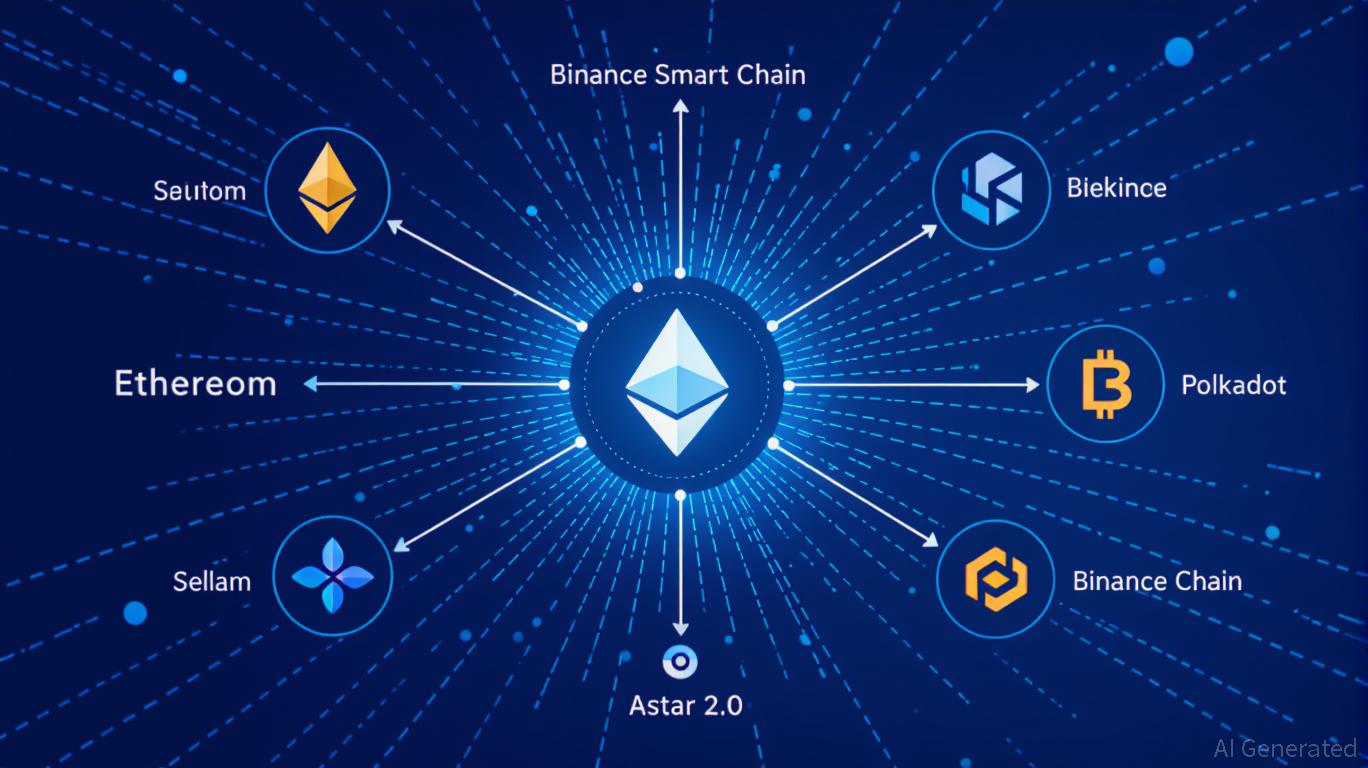Vitalik Buterin’s Latest Support for ZK Technology and What It Means for the Cryptocurrency Industry
- Vitalik Buterin promotes ZK technologies as Ethereum's scalability and privacy solution, accelerating institutional adoption through technical upgrades and partnerships. - ZKsync's 15,000 TPS Atlas upgrade and Polygon's AggLayer framework highlight ZK's role in cross-chain efficiency, with ZKsync's token surging 120% in 2025. - Institutional investments in Succinct Labs ($55M) and Aztec Network ($100M) underscore growing confidence in ZK's ability to solve blockchain's scalability-privacy trilemma. - ZK
Buterin’s Support: Accelerating ZK Integration
Buterin’s advocacy for ZK technology has focused on three main areas: scalability, interoperability, and privacy. In November 2025, he publicly praised ZKsync’s Atlas upgrade, which reached 15,000 transactions per second (TPS) and provided nearly instant finality, describing it as “a significant advancement for Ethereum’s institutional use”
In addition to

ZK Infrastructure: Investment Prospects
The endorsement of ZK technology by an influential figure like Buterin has sparked increased funding and collaborations for leading projects. ZKsync, for example, has seen its token (ZK) rise by 120% since October 2025,
At the same time, Polygon has strengthened its reputation as a ZK frontrunner with its AggLayer framework, which links multiple rollups to boost scalability. Buterin’s recognition of Polygon’s early ZK-EVM work has enhanced its standing, while co-founder Sandeep Nailwal’s charitable efforts through CryptoRelief have broadened its influence
Beyond these major players, Succinct Labs and Aztec Network have become attractive options for investors.
Market Trends and Future Outlook
The ZK Layer 2 sector is expected to expand at a 60.7% annual growth rate,
Nonetheless, there are still obstacles. Regulatory attention on privacy coins and technical difficulties in implementing protocols like GKR (Buterin’s innovation in ZK verification) could hinder progress. Investors should also consider the uncertainties in regulation alongside the long-term promise of ZK infrastructure.
Conclusion: A Crucial Turning Point
Vitalik Buterin’s support has not only legitimized ZK technology but also sped up its adoption within Ethereum’s main development plans. For investors, the priority is to identify projects that cater to institutional requirements—such as ZKsync’s liquidity-sharing features or Succinct Labs’ developer-oriented solutions—while managing regulatory challenges. As the ZK landscape evolves, those who move early are positioned to benefit from a market set for rapid expansion.
Disclaimer: The content of this article solely reflects the author's opinion and does not represent the platform in any capacity. This article is not intended to serve as a reference for making investment decisions.
You may also like
Bitcoin News Update: CFTC's Broader Role in Crypto Regulation Ignites Discussion on Clearer Rules
- U.S. lawmakers propose expanding CFTC's crypto oversight via a bill reclassifying spot trading, diverging from SEC's enforcement approach. - Harvard University invests $443M in BlackRock's IBIT ETF, reflecting institutional confidence in crypto as a legitimate asset class. - DeFi projects like Mutuum Finance raise $18.7M in presales, leveraging regulatory momentum and transparent on-chain credit systems. - RockToken's infrastructure-backed crypto contracts attract long-term investors with structured yiel

DASH Aster DEX's Latest On-Chain Growth and What It Means for DeFi Liquidity
- DASH Aster DEX leads 2025 DeFi shift with hybrid AMM-CEX model and multi-chain support (BNB, Ethereum , Solana), boosting TVL to $1.399B and Q3 daily trading volumes of $27.7B. - Platform's 1,650% ASTER token price surge post-TGE attracted 330,000 new wallets, with 94% of BSC-USD volume ($2B/day) driving institutional adoption via Binance/YZi partnerships. - ASTER token mechanics enable 80% margin trading, 5-7% staking rewards, and governance rights, while annual 5-7% fee burns create scarcity and align

Astar 2.0: Leading a New Generation of DeFi and Cross-Chain Advancements
- Astar 2.0 introduces a zkEVM mainnet and cross-chain interoperability, slashing gas fees and enabling 150,000 TPS with 2025 scalability goals. - Strategic partnerships with Mazda, Japan Airlines, and Sony demonstrate blockchain's real-world applications in logistics, loyalty programs, and digital asset tokenization. - Q3 2025 data shows $2.38M DeFi TVL growth and 20% active wallet increase, alongside a $3.16M institutional ASTR token acquisition. - The platform aims to solidify its role as a foundational

Aster DEX Introduces New On-Ramp: Transforming Retail Participation in DeFi
- Aster DEX integrates institutional-grade custody and privacy tech (zero-knowledge proofs) to bridge retail-institutional DeFi gaps via BNB Chain partnerships. - TVL surged to $2.18B by late 2025 through yield-bearing stablecoins and hidden orders, attracting both retail and institutional liquidity. - Despite compliance gaps and wash trading concerns, Aster's Binance alignment and Coinbase listing signals growing institutional validation.
